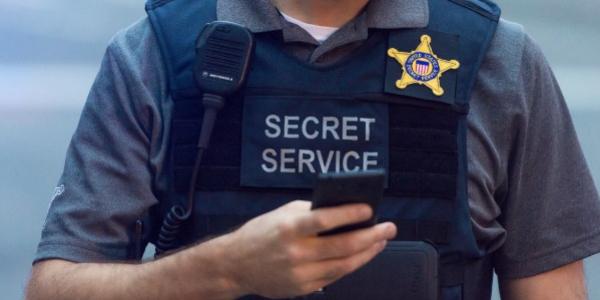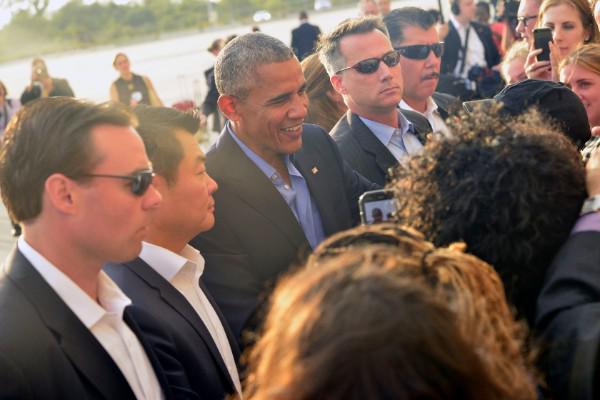Inside the Secret Service’s First Cyber Strategy
The U.S. Secret Service is putting into place its first-ever cyber and information technology strategic plan, which provides a path forward through 2021. Among other goals, the plan calls for the agency to build a world-class network operations security center and to continue the march toward greater mobility for special agents and uniformed officers.
Brig. Gen. Kevin Nally, USMC (Ret.), the Secret Service’s chief information officer (CIO) since November 2015, finished writing the strategy almost a year ago. He has been overseeing its implementation, including during the recent presidential campaign season, which required his team to deploy in support of numerous national special security events, or NSSEs in Secret Service parlance.
Initial response to the plan is positive, he reports. “People like it because it provides a focus for what is required to accomplish the mission,” Gen. Nally says. “The people who work with me now have a document that says this is the way ahead, so they’re focused on not just the mission but what we need to do to support the mission.”
The strategy document, which will not be made public, lays out the agency’s vision and goals and then breaks down the goals into specific objectives and tasks. “We have a plan of action and milestones dedicated to each of those tasks,” Gen. Nally says. He reviews the plan every two weeks with his staff and adjusts it as necessary.
The general credits his staff for progress made, but he says the plan would progress more quickly if not for the agency’s work schedule. “The strategy is being implemented. It’s just slow,” he says.
The reason is that the service has been supporting an unusually high number of NSSEs, which include Republican and Democratic conventions, political debates, numerous campaign events, meetings of the U.N. General Assembly and this month’s presidential inauguration. The service also supported the opening of Smithsonian’s National Museum of African American History and Culture, which involved President Barack Obama, dozens of congressional representatives and several foreign dignitaries.
At the moment, Gen. Nally’s top priority is ensuring that agents, known as 1811s, and the uniformed division (UD) officers have the appropriate communication and information technology devices and infrastructure to support their day-to-day mission. The special agents protect the president and the nation’s highest elected leaders and are responsible for carrying out investigations, while the UDs “wear police-type uniforms and protect what we call the 18 acres, which is the White House and the area around the White House,” he explains.
The general’s goals include making mobile communications more effective. The service currently uses a mix of Android and Windows cellphones, along with tablets, when appropriate. “We’re looking at becoming operating-system agnostic, so the applications we develop in-house can be used on any type of mobile device,” he reports. “That plan is in the works. But we also want to make sure we stay joint within the Homeland Security Department and federal, state and local law enforcement agencies because we always work together as a team.”
The CIO team also is upgrading the joint operations center with new voice, video and data capabilities, and it is installing an ultrahigh frequency trunking capability to provide UD officers with more reliable communications around Washington. “We’re updating the National Capital Region with state-of-the-art radios and antennas over the next couple of years to cover the dead spots. We’re putting in some other IT devices that will assist us in providing communications,” Gen. Nally reveals.
Furthermore, the Secret Service is moving to thin client computing where possible and upgrading the network operations center with dense wavelength division multiplexing to increase bandwidth. The fiber optic technology allows light wavelengths to transmit data parallel by bit or serial by character, which means users can better adjust to ever-increasing demands for bandwidth. As a result, the agency’s multiple field offices throughout the United States and the world are seeing an upgrade in voice, video and data wireless fidelity.
In addition, automation will improve the scheduling system that allows UD officers to arrange time off for vacation, sick leave and medical appointments, Gen. Nally says. The system replaces a binder about 12 inches thick. “It will be on a mobile device and will allow them to have prior planning. Right now they can only plan three days in advance. They will be able to plan up to a year in advance, which is a huge benefit, a morale booster, for them,” he says.
Gen. Nally has initiated other changes since taking office. One of his first recommendations was to put the CIO in charge of the agency’s information technology budget, which is about $500 million annually. That change allows better tracking of the agency’s information technology assets and more effective compliance with government guidance and regulations.
At the same time, the Information Resources Management Division has moved back under the CIO, where it had been in previous years. Gen. Nally reorganized it into five different divisions: Cybersecurity, IT Operations, Governance, Customer Service Relations and Program Management.
He praises the agency’s information technology infrastructure, describing it as solid. The general equates it to a four-star joint task force headquarters that can easily take on a cyberthreat comparable to what he faced while serving as CIO of the Marine Corps. “It’s the same issues, the same concerns. It’s just continuous. It’s a never-ending effort for us to constantly stay ahead of the adversaries,” he states.
In addition to protecting the Secret Service’s only networks, the CIO supports the agency’s cybersecurity mission, which includes investigations to identify, locate and apprehend criminal organizations and individuals targeting the nation’s critical financial infrastructure and payment systems. The service deploys Electronic Crimes Task Forces around the country to prevent, detect, investigate and mitigate attacks on that infrastructure.
Gen. Nally’s biggest challenge is hiring enough qualified people. He has about 50 vacancies, 20 percent of which he estimates are in the cyber realm. The general says he is authorized a staff of 222 administrative, professional and technical personnel and about 200 contractors who provide communications and information technology support, including operating and defending the network.
“When we do national special security events, I actually deploy anywhere between 70 to 100 bodies. If you take 100 bodies deployed minus the vacancies, you can do the math and see what I’m left with. But the mission comes first, and we’ve always been very successful supporting communications, IT and cybersecurity for those events,” he says.
Competition for technically astute personnel is fierce in Washington as various government departments and agencies vie with the private sector for talent. While Gen. Nally is looking primarily for people with college degrees and professional experience, he also welcomes applications from college interns.
Scandals that have rocked the Secret Service in recent years have not seriously affected the ability to hire technical professionals, in part, because the agency has made improvements, he says. He stresses the importance of the mission. “If you work for the Secret Service, you go home at night feeling like there’s value to your job because of the mission and the dedication of the people here,” Gen. Nally declares. “I’d say 50 percent of the job is operational, which I really enjoy. I’m not just up here writing policy and governance.”
The general stresses that the Secret Service makes for an easy transition for military personnel and is a great place to work. Almost as if to illustrate the point, he walks through the halls greeting every person by name and sharing a friendly, lighthearted rapport with each one. “I’m fascinated with the mission and the people, the dedication and the focus to accomplish the mission. It’s the premier law enforcement agency in the world,” Gen. Nally says.







Comments